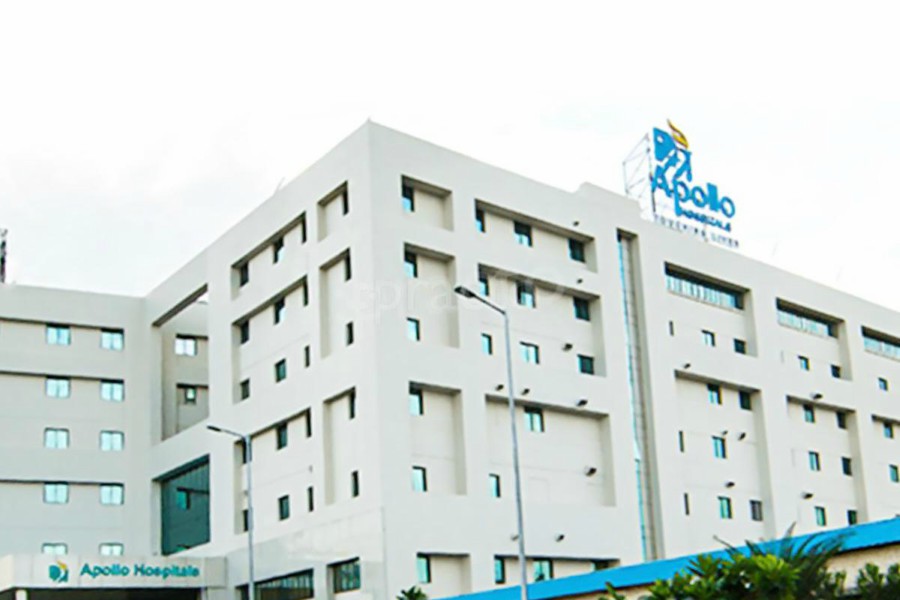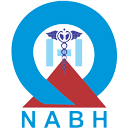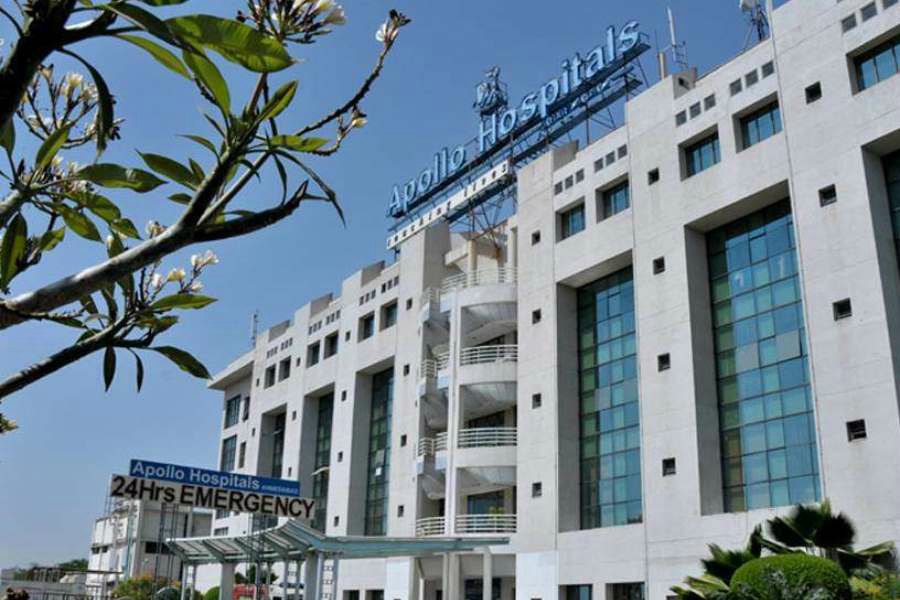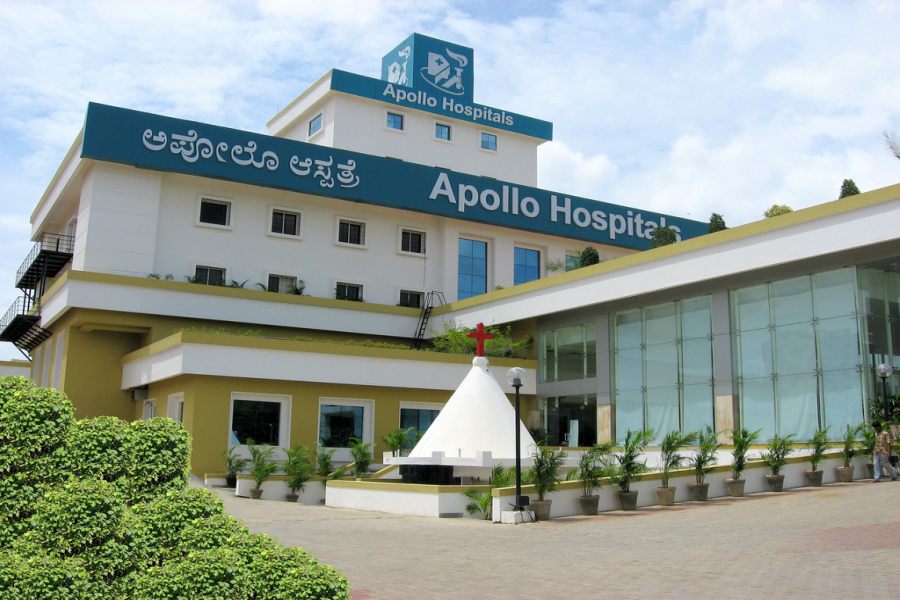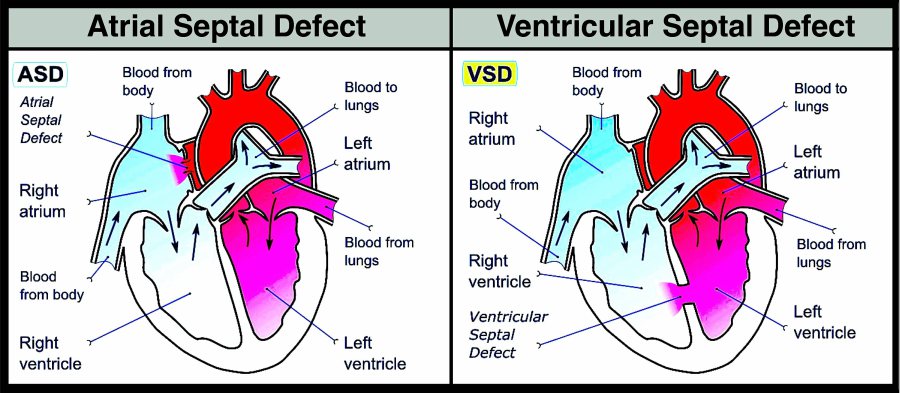
Overview
The main propelling compartment of the heart is the left ventricle, which is connected with the main artery that delivers oxygen-rich blood to your body. The atrial septum is the muscular wall that separates the left and right side of the atrium.
Due to some reason, if an aperture exists in the demarcating wall of the left and right atrium, the phenomenon is known as the Atrial Septal Defect (ASD).
Likewise, the muscular partition that keeps the two chambers of the ventricle individual and fully divided is known as the ventral septum and if for some cause, the septum is not complete or if a hole remains in its structure, then the situation is called a Ventricular Septal Defect (VSD).
Why it’s done?
The septum is actually a covering made up of cardiac tissues that separate the two atriums and two ventricles into four distinct chambers. Any “hole in the wall” situation will make the purified oxygen-rich blood to mix with the deoxygenated blood, and then spread it across the body. Due to the decreased internal force, the cardiac muscle will have to put in an extra effort to maintain the normal pace of the blood flow. This can lead to various complications in the future, including drastic ones like heart attack, arrhythmia, and even heart blocks. The small-sized apertures do not cause many problems, but defects with a larger size may have to be corrected with surgical intervention.
The management for different difficulties in these two defects is decided on the intensity of the problem and with other related factors. In a nutshell, the complications that are treated due to ASD or VSD can be surmised as;
- For Atrial Septal Defect
In its essence, the atrial septal defect allows the freshly oxygenated blood from the left atrium to mix with the deoxygenated blood from the right atrium and get distributed to the lungs. Large ASDs can overfill the lungs, and henceforth, force the heart to work with more intensity.
This can, in the long run, enlarge the right side of the heart and gradually weaken it. Ignoring this for a long time may give rise to pulmonary hypertension, that is, the increase of blood pressure in the lung chambers. The other impediments the patient may face are:
- Secundum: This is the most general type of ASD, and occurs in the middle of the atrial septum.
- Primum: This fault happens in the lower part of the atrial septum, and may be an effect of other congenital heart problems.
- Sinus venosus: This defect is rare in its occurrence and usually takes place in the upper portion of the atrial septum.
- Coronary sinus. In this uncommon defect, part of the wall between the coronary sinus (found in the venous system of the cardiac regions) and the left atrium is missing.
For Ventricular Septal Defect
Typically, the right side of the heart pumps blood to the lungs for getting oxygenated; the left side pumps the oxygen-rich blood to the whole body. A VSD permits the oxygenated blood to mix with blood with less oxygen, causing the heart to work more to make enough oxygen available to the body's tissues.
VSDs can be present anywhere in the wall between the ventricles and can be of different sizes and numbers. The complications that may arise due to this cardiac defect can be arranged as;
- Heart failure: In a heart with a medium or large VSD, the heart needs to function with extra effort to pump enough blood to the body. Because of this, without immediate care, heart failure can develop.
- Pulmonary hypertension: Due to the increased flow of blood in the pulmonary arteries, the pressure of the blood can increase, leading to pulmonary hypertension, which is damaging to the lung tissues. In extreme cases, the flow of blood may get reversed through the hole, leading to a condition known as the “Eisenmenger syndrome”.
- Endocarditis: This is actually an infection in the cardiac region, and is not so common.
- Other problems: These comprise of arrhythmia and cardiac valve issues.
Causes
The reasons for the generation of ASD and VSD are not usually an external factor. In most of the cases, this problem can be observed in kids; and when it is detected in adults, a proper regimen must be followed to correct the defect as soon as possible. The causes that generate this defect can be surmised as;
- Congenital: During development of a fetus, the muscular wall or septum separating the heart into left and right sides fails to form fully between the upper and lower chambers of the heart, giving rise to the ASD and VSD.
- Environmental: Several pollutant or chemical can cause this defect upon prolonged exposure.
- Genetic factors: improper synthesis of constituent proteins can also be a factor due to a mutation in the DNA.
SYMPTOMS
The indications of Atrial Septal Defect and Ventricular Septal Defect vary according to the age of the patients. As essentially both of the defects are caused by the incorrect formation of the cardiac wall, the signs that can be symptomatic of a serious cardiac problem will also be similar in their features. The basic symptoms that can be seen in the case of Atrial Septal Defect and Ventricular Septal Defect are listed as below:
- Difficulty in breathing, especially when doing strenuous activity
- Weariness
- Inflammation of legs, feet or abdomen
- Heart tremors or missed beats
- Stroke
- Heart murmur, an abnormal whooshing sound that can be perceived through a stethoscope
DIAGNOSIS
ASD or VSD may not be detectable in the early ages. Depending upon the symptoms, the attending physician may request one or more of the following tests:
- Echocardiogram: This exam can help doctors to diagnose the state of the atrial septum, and the source and severity of your illness. It can also help surgeons determine if you have other heart-related illnesses.
- Chest X-ray. An X-ray image helps your doctor to observe the state of your heart and lungs. An X-ray may recognize conditions other than a cardiac defect that may explain your symptoms of illnesses.
- Magnetic resonance imaging (MRI): This technique uses electromagnetic waves to render a 3D image of your heart. The doctor may ask for this test if the ASD or VSD cannot be surely identified.
Other tests like Electrocardiogram and Cardiac catheterization may be recommended by the physician according to the cardiac situation of the patient.
RISK FACTORS
As ASD and VSD can be seen in both adult and children, the risk factors are also different from person to person. Some of the associated risks are:
- Rubella infection
- Drug, tobacco or alcohol use, or exposure to certain substances by the mother can harm the fetus
- Pregnant mothers with Diabetes or lupus have increased chance of having a baby with ASD or VSD
- Obesity
- Not following the Phenylketonuria (PKU) food plan by the mother can result in heart defect in a fetus
POST-OPERATIVE CARE
- The patient may be admitted into the intensive care unit (ICU) for a short duration.
- The patient will receive sustenance, drug, and solutions through an IV.
- A catheter may assist the voiding of urine.
- A sternal tube will be available to drain blood and fluid.
- Pain medicines may be given for any after-operation pain.
- A restriction may be placed for some time on the patient to avoid sudden blows to the chest.
- May be given low-fat diet.
TREATMENT
Management of ASD and VSD with medicines like beta blockers and anticoagulants will not physically close the hole. However, it does abate some of the symptoms taking place due to the defect.
According to the age and the progression of the disease symptoms, the physicians may suggest the following tips for before, during and after the surgery:
Before the procedure
The team of caregivers will review your case history, any alcohol or drug use, past medical histories, any hypersensitivity etc. Then they will check for any abnormality in your pulse or blood pressure. You may not be given any food or drink before the operation.
Before the procedure, you will be given painkillers at the location of the incision or will be made fully unconscious according to the type of surgery determined by the physician. Any personal items like jewellery, piercings, dentures, contact lenses will have to be removed during the procedure.
During the procedure
- You will be laid on the operating table with the ribcage facing upwards.
- The part where the opening is made will be made hairless.
- You will be given local anesthesia or will be made completely unconscious.
- You will be attached with a heart-lung bypass machine which will keep the flow of blood in one piece during the process.
The time taken will depend on the procedure adopted, which may be one of the following;
- Cardiac catheterization: In this system, doctors introduce a thin catheter into a blood vessel leading it to the heart. Through the catheter, doctors fix a mesh patch or plug to repair the aperture. The heart tissue divides around the covering and completely seals the addition. This procedure is applicable for only the secundum type of atrial septal defects.
- Open-heart surgery: Patients with serious cases of ASD and VSD are treated with open-heart surgery. Under anesthesia and oxygen support, the chest cavity of the patient is opened to expose the heart and a patch or covering is applied physically by the surgeon. Sometimes, minimally invasive surgery may suffice for surgical treatment.
FACTORS AFFECTING COST
The cost of ASD repair may be similar to an open-heart surgery and may depend upon the following;
- The room and operation theater charges at the hospital.
- The cost of the antibiotic and other drugs administered.
- The charges of the cardiologist and any other specialist.
- The instruments needed for the surgery.
- The type of surgery performed (open-heart or others)
FAQ
From a medical standpoint, yes, it is. Ignoring this cardiac defect, especially of big sizes, can give rise to serious complications like pulmonary hypertension, endocarditis and heart failure. Any patient suspected of ASD or VSD shall contact with the doctor immediately.
Not everyone with a VSD needs to have the defect repaired. Very small holes in the ventricular septum may not be so instrumental to pass large quantities of blood within the ventricles.
This can only happen for smaller VSDs. Although the hole is not completely filled up or closed; it may get smaller over time, which may reduce some of the symptoms. Large VSDs need surgery to close them.
ASD or VSD is corrected by open-heart surgery, usually in the infant or children. Normally, a patch of sterile fabric or the patient’s own pericardium is sewn over the aperture to completely close it.
The validity of the surgery is life-long. A hole once closed will not open by itself unless done intentionally. Once the new tissues are formed abound the closed aperture, it is sealed for life.


 Best Hospitals
Best Hospitals
